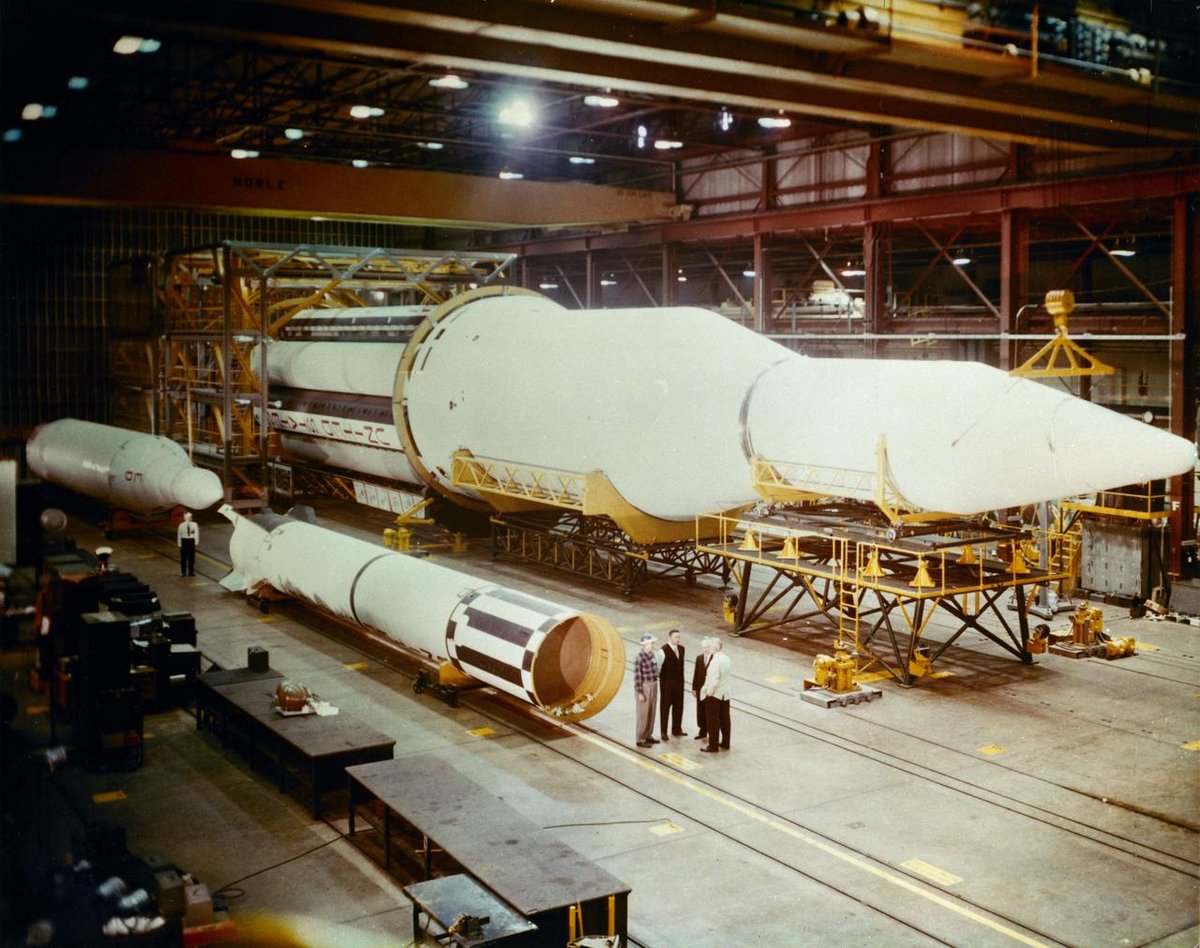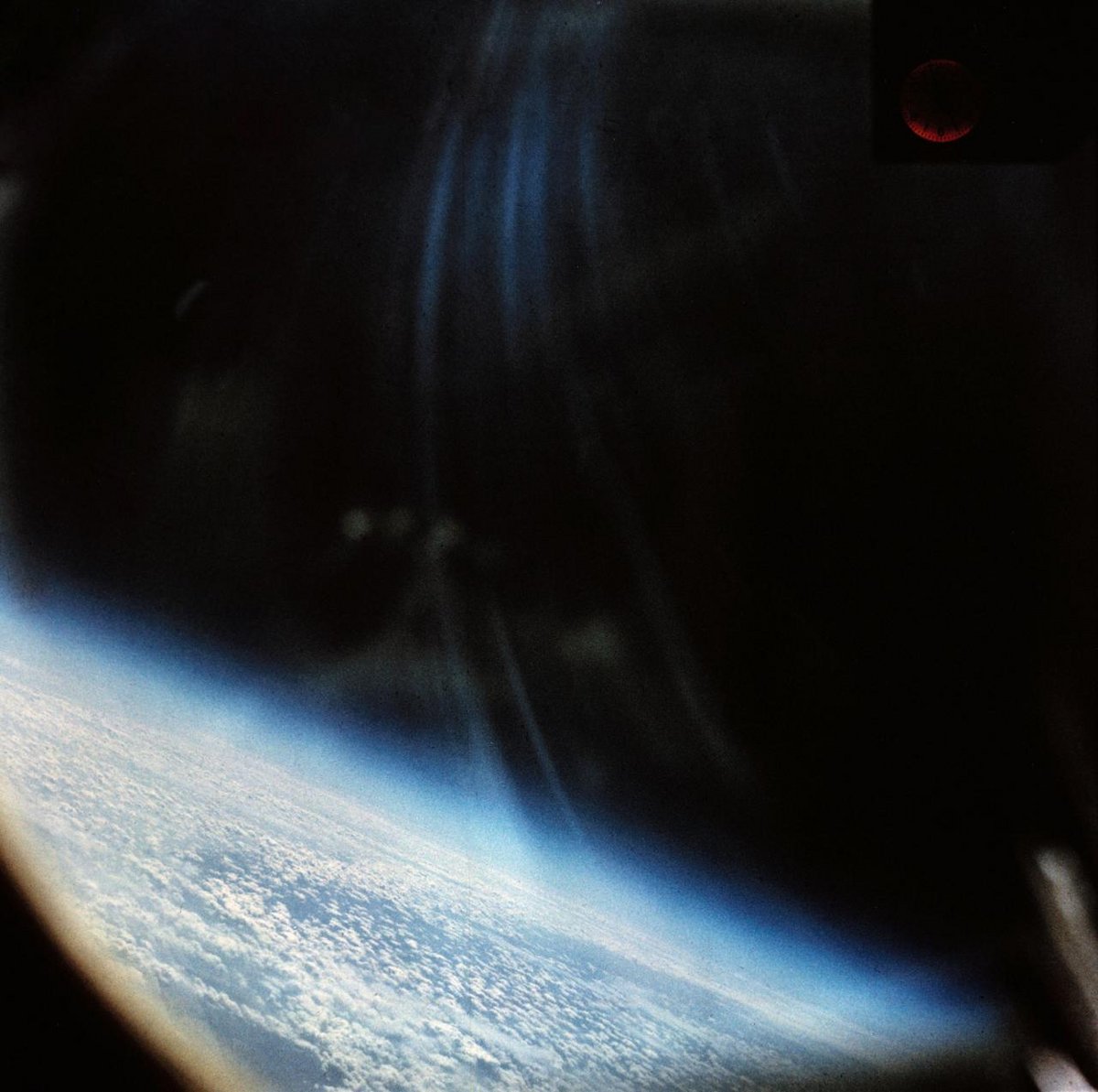NASA does not have the technical means, for its first large-scale project, Mercury, to send astronauts around the Earth. But thanks to an almost outdated rocket in the early 60s, she will be able to save face after the new feat of the Soviets !
Her replacement was long overdue!
Atlas is not (yet) ready
NASA was not yet officially an agency and the Mercury program was already in full swing. Around the country, American teams worked on a “simple” objective: to send the first American into space. But there is already a major problem: despite its size and mass reduced to a minimum (about 1.5 tons, without the emergency ejection system), Mercury can only be sent into orbit thanks to the most powerful rocket in the American arsenal at the time, Atlas. But the development is too slow, and the launcher is unreliable. In May 1959, when Mercury astronauts observed the launch of an Atlas-D, the rocket exploded after one minute of flight. Suffice to say that it is unthinkable to embark a human in this business. But there is an intermediate solution, a launch vehicle that can target space without sending them into orbit: Redstone.
Who wants to sit on a missile?
Redstone, which will be known in its version for the Mercury project under the name Mercury-Redstone, is above all a ballistic missile. And like its distant Soviet cousin the R-7 Semiorka rocket, one can easily trace its family tree to the terrible rocket developed under the Nazi regime, the V2. And even insist a little, because the PGM-11 missile comes directly from the work of the German teams repatriated at the end of the war during Operation Paperclip. It will take the name of Redstone, which is the base of the US Army (Arsenal of Redstone) within which the first missile tests take place. And imagine that if the name means nothing to you, they still manufacture, more than 70 years later, engines and rockets. Because the former Redstone base is located next to Huntsville-Decatur in Alabama, cradle of the ULA company producing Atlas V, Delta IV, but also of the ultra-modern BE-4 rocket engine factory…
A missile with small ambitions
But let’s go back to the early 1950s. The V-2’s rocket engine was improved, pushed to its limits by Rocketdyne at the instigation of the American government. The first prototype version of the PGM-11 “Redstone” flew on August 20, 1953, with a 75-110 A engine, which was quickly nicknamed A-1. Subsequently, the engine in question will be upgraded in different versions (including some liquid propellant changes) up to the A-7 version. Redstone is a 21 m high and 1.78 m wide ballistic missile capable of guiding itself with military precision up to 282 km, while carrying a nuclear payload of more than 3 tons. This is far from the performance of the Soviet generations which were born at the same time, but the emphasis is on transport (3 parts, removable) and reliability. And while Redstone arrives in the military, its Jupiter development versions, even if they are intended for the armies, give ideas to researchers to make it a space launcher.
Redstone has already saved the satellite program
The works of the Jupiter versions serve as precursors, because Redstone is above all a single-stage missile: a double tank and a single engine, surmounted by its guidance system and its warhead. Of course, it would be even more efficient with a second stage, even if this introduces additional complexity. But it is also relevant for studying the atmospheric re-entry of warheads, which will lead to the future development of protective shields for capsules. Jupiter-A like Jupiter-C flew in 1956 for the first time, and gave promising results. Moreover it is Jupiter-C (also called Juno-1 for the occasion) which will save the face of the United States by sending the first national satellite, Explorer-1, in orbit.

Not that easy
Redstone is therefore in 1958-59 an efficient stage, reliable, relatively flexible to use and built in series. It’s a little downgraded, but at least it’s safe. In theory, adding a Mercury capsule (also in development) shouldn’t be a problem! On the contrary, the authorities hope to make it a simple stopover until Atlas is reliable enough to transport humans. But to the surprise of some, to be able to take astronauts to space, Mercury-Redstone will have to undergo modifications, because it is not powerful enough. It is necessary to use an elongated stage (it is now 25 m high), to change fuel for a less toxic compound, and above all to manage all the possible failures to activate the emergency systems. If the launcher deviates, if it explodes, if the capsule has a problem, if the astronaut or the ground teams decide to trigger the evacuation… And on November 21, 1960, for the first flight of a Mercury capsule on its Mercury Redstone rocket, the ground teams don’t know it, but they are going to be served, with a unique takeoff in history.
A show for 10 centimeters
This flight is now known as the “4 inch flight” (or the flight of 10 cm). When the countdown reaches zero, the engine ignites and the rocket takes off… But a bad reference (grounding) caused by a cable disconnected too late with the ground causes the engine to stop immediately. Mercury-Redstone makes a small jump, then falls, without damage on the launch pad. When stopping, the engine sends a “normal stop” signal to the other systems, so the emergency ejection system is unhooked from the capsule… which remains on the booster, because it is not weightless. During this time, her barometer detects that she is below 3000 m altitude, and therefore triggers the opening of the parachutes! The situation is comical to observe, but at the control center, the teams do not lead far. They will have to wait until the next day to approach the launcher, purge the systems and understand the failure, before modifying the systems concerned.

Finally on time (or not)
Less than a month later on December 19, the flight is repeated and this time everything works exactly as planned: Mercury can climb and exceed the “frontier of space”, whether it is that of 80 or 100 kilometers from altitude. There remains a qualification flight of the capsule with the monkey Ham, a qualification flight of the rocket (in order to eliminate strong vibrations in the flight profile), then Mercury-Redstone will be able to embark a human in space for the first time in the world. At the turn of 1961, the teams knew that the schedule would be difficult to keep, but the Americans were optimistic: skipping Atlas and preparing the manned program with Mercury-Redstone was a good choice, which allowed them to progress much faster. What they don’t know is that they are still a few weeks late, whether due to the 4-inch flight or some initial procrastination of the program during the initial phases in 1959. Because April 12 in the morning, a Soviet takes off, and for orbit, please!
After the shock produced by Yuri Gagarin, the Mercury program is still accelerating. And the version with Mercury-Redstone is ready. Alan Shepard will take off with her on May 5, to tip the United States into the era of manned spaceflight. However, there is no longer any need to fly all the astronauts on the “small version”. Only Virgin Grissom will be allowed to fly the last Mercury-Redstone on July 21. The Eastern bloc has once again dictated the agenda: we must aim for orbit, and quickly. Because the White House already has its sights set on the Moon…


2